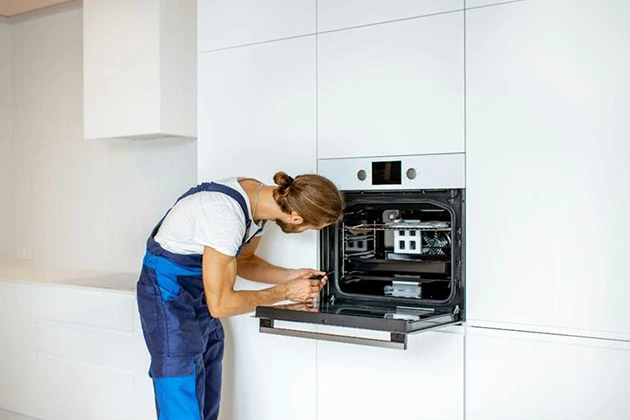Small businesses face unique challenges that demand efficient solutions. As you navigate the complexities of running an appliance repair service, the tools you choose can make all the difference. Appliance repair software has emerged as a game-changer, simplifying operations while boosting customer satisfaction
But are these software solutions truly relevant for small businesses? With so many options available, it’s essential to understand their benefits and how they can elevate your service offerings. From managing schedules to tracking inventory, appliance repair software can help you stay organized and competitive in a crowded market. Let’s explore the relevance of these tools and how they can transform your small business into a more efficient and customer-focused operation.
How Software Can Support Appliance Repair Businesses
From scheduling to inventory management, appliance repair software makes it easier to enhance overall service delivery.
What Does Appliance Repair Software Do ?
Appliance repair software refers to specialized tools designed to assist businesses in managing daily operations related to appliance servicing. These solutions enable technicians to efficiently schedule appointments, track job statuses, and manage parts inventory. The primary purpose is to optimize workflows, reduce manual tasks, and ultimately enhance customer satisfaction. By implementing it, you can improve communication with customers and facilitate smoother service workflows.
Useful Software Features for Appliance Repair Businesses
Several software features can help appliance repair businesses :
- Scheduling tools: Simplify appointment booking and automate reminders for customers.
- Invoice management: Generate, send, and track invoices, ensuring timely payments.
- Inventory tracking: Monitor stock levels of parts, minimizing delays during the repair process.
- Customer management: Store client information, track service history, and support follow-up communications.
- Reporting module: Provide insights into operational performance and customer satisfaction metrics.
These features collectively improve efficiency and provide the tools necessary for appliance repair businesses to thrive in a competitive market.
Benefits for Small Businesses
Appliance repair software provides small businesses with valuable advantages, helping to attract more clients, secure more jobs, and automate time-consuming tasks
Save time and work more efficiently with automation
It automates scheduling, job tracking, and inventory management. Automation reduces manual errors and saves time, enabling you to focus on core business activities. With real-time updates, technicians receive immediate notifications, allowing for better time management and increased productivity. Access to detailed reporting also aids in identifying inefficiencies, allowing you to address them promptly. By streamlining operations, you can optimize workflows and reduce service delays, ultimately boosting your profitability.
Better Customer Service, Happier Customers
Appliance repair software enhances customer service through streamlined communication and better appointment management. With features like automated reminders and real-time scheduling updates, customers stay informed and engaged, fostering trust and loyalty. It also facilitates quick access to customer histories, allowing you to personalize service and address concerns efficiently. By providing timely and effective communication, you will enhance the customer experience, leading to higher satisfaction rates and positive word-of-mouth referrals.
Challenges in Appliance Repair Software Adoption
Adopting a software like this presents specific challenges for small businesses. Awareness of these hurdles helps you navigate the integration process effectively.
Cost Considerations
Cost poses a significant barrier when implementing appliance repair software. Small businesses often contend with budget constraints, making it essential to evaluate both initial investments and ongoing subscription fees. While some software options offer basic functionality, investing in comprehensive solutions equips you with advanced features that yield long-term savings through increased efficiency. Many small businesses overlook essential costs associated with training and maintenance, which can further impact their return on investment.
Learning Curve
A steep learning curve complicates the transition to this kind of software. You may struggle with complex interfaces and varied features, leading to potential workflow disruptions and frustration. Booking a demo, effective training and support resources are critical for minimizing this challenge. Choosing user-friendly software with comprehensive tutorials can significantly reduce onboarding times. A study by TechCrunch emphasizes the importance of intuitive design in software, noting that businesses adopting well-structured training programs experience higher rates of successful integration.
Case Studies and Success Stories
Examining real-world applications of appliance repair software reveals its significant impact on small businesses. Case studies illustrate the transformative benefits these tools provide in streamlining operations and enhancing customer experiences.
Small Business Examples
Successful implementation of appliance repair software can be seen in various small businesses. For instance, “ABC Appliance Service,” a local repair company, adopted such a software solution and integrated scheduling tools, drastically improving appointment management. This change led to a 30% increase in on-time service calls, allowing technicians to handle more jobs per day. Similarly, “QuickFix Appliances” utilized software for inventory tracking, reducing part mismanagement issues, which had plagued the business previously.
Measurable Outcomes
Measurable results from adopting appliance repair software highlight its effectiveness. Businesses report an average reduction of 20 hours per month spent on scheduling tasks alone. The automation of invoices led to a 25% decrease in payment delays, allowing companies to maintain healthier cash flows. Additionally, customer satisfaction ratings improved by 40% after implementing streamlined communication features provided by the software, demonstrating its critical role in enhancing overall service quality.
Appliance Repair Software Trends for 2025
The future is poised for exciting developments, driven by technological advancements and expanding market opportunities.
AI Integration and Advanced Technologies
Technological innovations are transforming appliance repair software, enhancing efficiency and functionality. Integration with artificial intelligence (AI) allows for predictive maintenance schedules, optimizing service calls based on appliance usage data. Mobile applications enhance technician accessibility, enabling real-time updates and communication with customers. Additionally, cloud-based solutions enable seamless data sharing, improving collaboration among team members. Tools that leverage Internet of Things (IoT) capabilities can diagnose issues remotely, reducing unnecessary service visits and increasing operational efficiency.
Market Growth Brings More Competition
Market growth for appliance repair software continues to accelerate as small businesses recognize its value. The global appliance repair market is projected to reach $56 billion by 2025, fueled by increasing consumer reliance on technology for home appliances. As competition intensifies, small businesses adopting these softwares see enhanced service offerings, leading to higher customer satisfaction. These solutions streamline processes and reduce operational costs, creating significant advantages for businesses looking to expand their market share. Currently, the industry is experiencing a robust rise, emphasizing the critical need for effective management tools.











